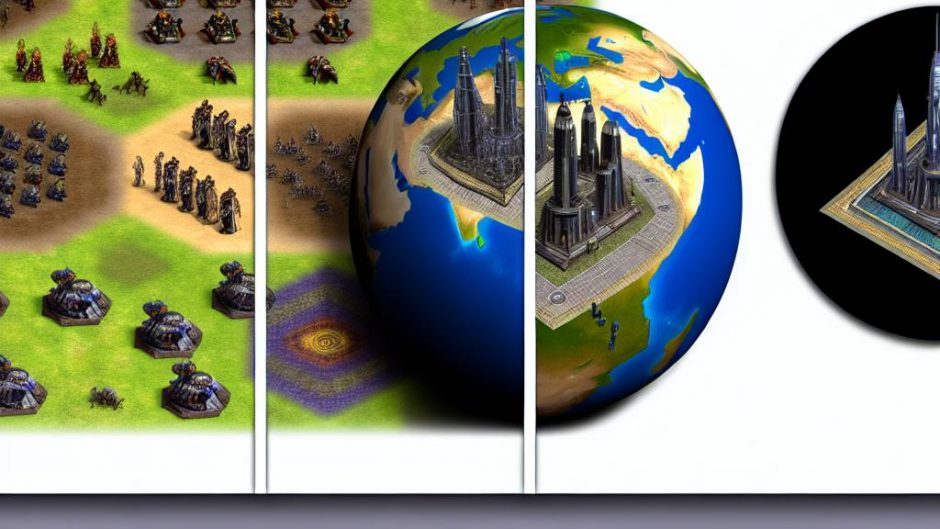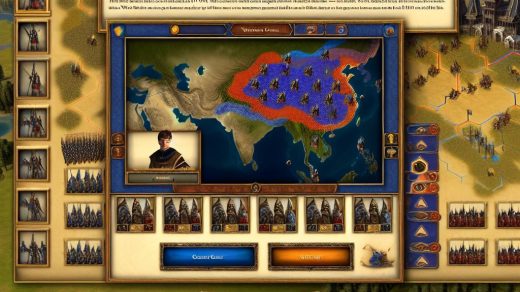Gameplay and Design Changes
The transition from Empire Earth II to Empire Earth III was marked by a series of notable changes that significantly impacted the gameplay and design aspects of the game. The developers embarked on a journey to simplify and streamline the game to cater to a wider audience while maintaining the core aspects that defined the series.
One of the most profound changes was the shift from a complex civilization progression system that involved multiple epochs and a wide array of units. These features were tailored to represent specific historical periods, offering players a deep and immersive experience. In contrast, Empire Earth III introduced a fresh perspective by categorizing civilizations into three distinct factions: the Western, Middle-Eastern, and Far Eastern factions. This broad categorization reduced the number of epochs and units, reflecting a strategic decision to simplify the game mechanics. The intention was to make the game more accessible and appealing to a broader audience, especially those who might not be familiar with intricate strategy games.
Graphical Overhaul
In terms of visuals, Empire Earth III marked a significant departure from its predecessors through a comprehensive graphical overhaul. The introduction of a new engine facilitated enhanced graphics, resulting in more detailed environments and units. The visual changes gave the game a new look, characterized by a more stylized and colorful approach compared to the realistic aesthetics of earlier titles in the series. While the new graphical style aimed to provide a vibrant and engaging visual experience, it was met with mixed reactions from the player community. Some players appreciated the fresh approach, while others missed the realistic and historically grounded look that had characterized Empire Earth II. This divergence in opinions highlighted the challenge of balancing innovation with the expectations of a loyal fanbase.
Single-Player Campaign
Another significant transformation in Empire Earth III was observed in the single-player campaign structure. The game introduced a territory control system, which allowed players to manage and oversee regions on a world map. This system aimed to offer a sense of global strategy, providing players with a more dynamic and strategic campaign experience. Unlike the previous installments that focused on time-based campaigns rooted in specific historical events, Empire Earth III prioritized flexibility and player agency. While this change introduced new strategic elements, it also potentially disconnected long-time fans from the historically anchored narratives that had characterized previous games. The shift in how story elements were conveyed marked a departure from traditional storytelling methods, posing both opportunities and challenges for the developers.
Streamlined Resource Management
Resource management also underwent significant changes in Empire Earth III. In previous installments, managing multiple resources was a crucial element of strategic planning, requiring players to allocate time and effort to collect and utilize various resources effectively. However, Empire Earth III took a different approach by simplifying the process and reducing the number of resources that players needed to manage. This shift aimed to decrease the level of micromanagement required, allowing players to focus more on tactical decisions and strategic gameplay rather than resource logistics. By streamlining resource management, the developers sought to enhance the overall gaming experience, making it more approachable for both new and seasoned players.
Multiplayer Enhancements
The multiplayer component of Empire Earth III also saw noteworthy updates, as the developers aimed to modernize the multiplayer experience and align it with contemporary trends in strategy gaming. New multiplayer modes were introduced, emphasizing faster and more accessible matches, which were designed to attract a broader audience. However, despite these enhancements, the decision to forgo some traditional multiplayer features from earlier installments led to mixed reactions. While the changes were intended to improve the multiplayer experience, dedicated fans of the series missed some of the features they had come to appreciate in earlier games.
In summary, Empire Earth III marked a departure from its predecessors by presenting a streamlined and graphically refreshed experience. The game’s new direction was characterized by simplified systems and a renewed visual style, which offered a different gaming experience. While some players embraced these changes, others found it challenging to reconcile the new direction with their expectations shaped by the earlier titles. The balance between innovation and tradition was an ongoing challenge, as developers sought to attract new players while satisfying the core audience. For more detailed information about specific features or player reception, official sources or dedicated fan sites provide further insights into the game’s evolution and impact on the real-time strategy genre.
This article was last updated on: May 10, 2025






Recent Comments